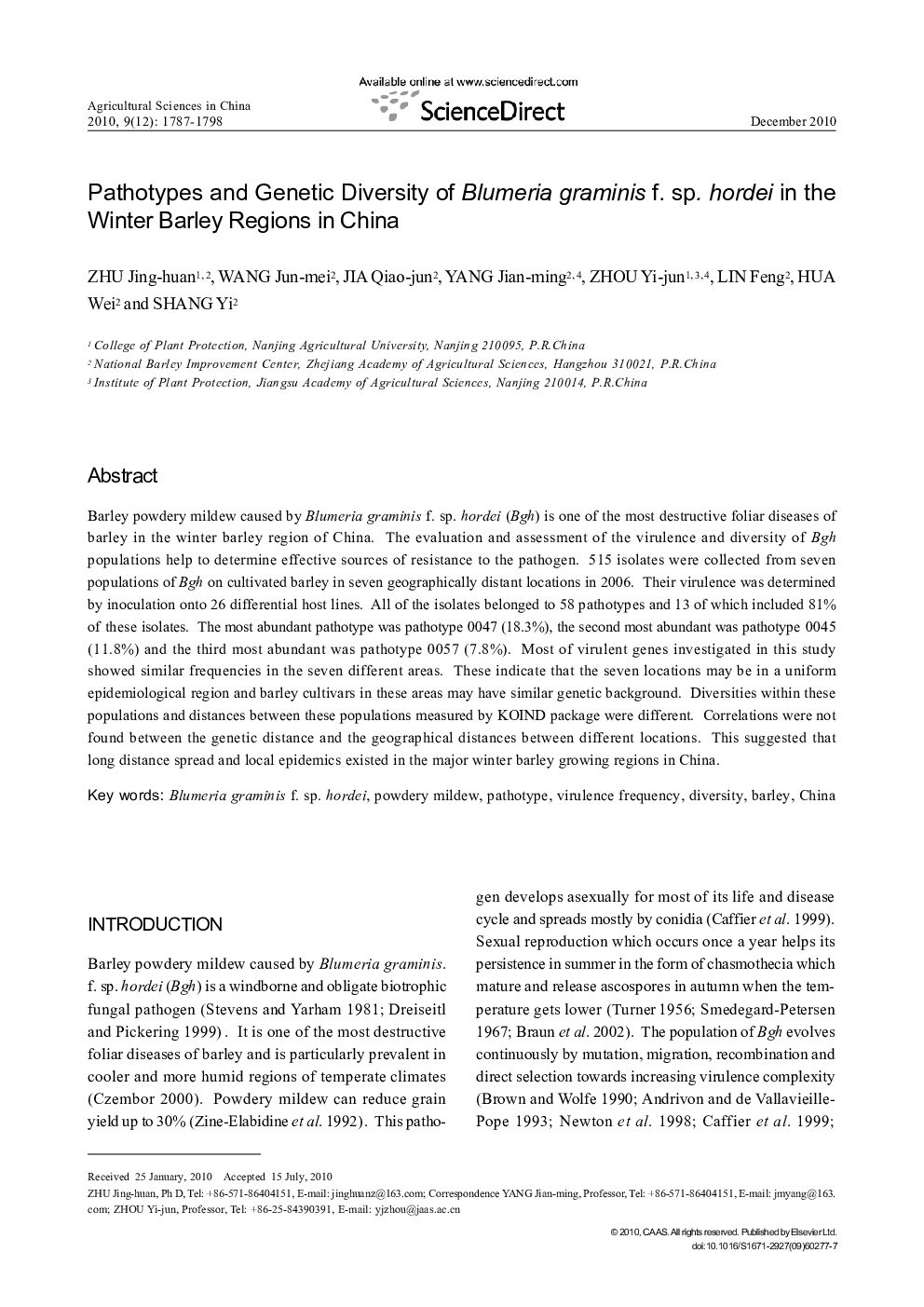| Article ID | Journal | Published Year | Pages | File Type |
|---|---|---|---|---|
| 4489987 | Agricultural Sciences in China | 2010 | 12 Pages |
Barley powdery mildew caused by Blumeria graminis f. sp. hordei (Bgh) is one of the most destructive foliar diseases of barley in the winter barley region of China. The evaluation and assessment of the virulence and diversity of Bgh populations help to determine effective sources of resistance to the pathogen. 515 isolates were collected from seven populations of Bgh on cultivated barley in seven geographically distant locations in 2006. Their virulence was determined by inoculation onto 26 differential host lines. All of the isolates belonged to 58 pathotypes and 13 of which included 81% of these isolates. The most abundant pathotype was pathotype 0047 (18.3%), the second most abundant was pathotype 0045 (11.8%) and the third most abundant was pathotype 0057 (7.8%). Most of virulent genes investigated in this study showed similar frequencies in the seven different areas. These indicate that the seven locations may be in a uniform epidemiological region and barley cultivars in these areas may have similar genetic background. Diversities within these populations and distances between these populations measured by KOIND package were different. Correlations were not found between the genetic distance and the geographical distances between different locations. This suggested that long distance spread and local epidemics existed in the major winter barley growing regions in China.
